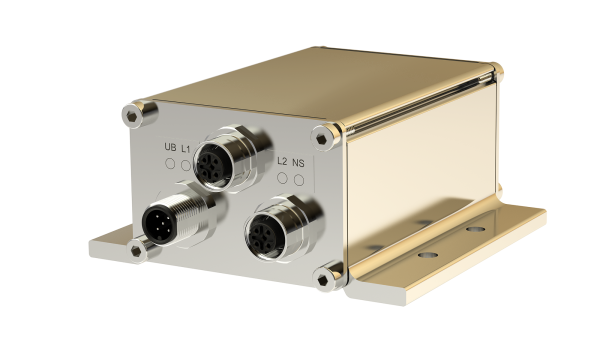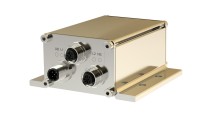As an extension of its portfolio for functionally safe sensors, TWK has developed a special tilt sensor with an integrated gyroscope that makes it possible to measure the position (angle of rotation) and the associated rotational speed in suitable applications, and does so with the simplest possible installation, as no shaft connection is required - called: Rotor hub sensor. Because: measuring rotational speeds is an increasingly important requirement in machines and systems. The position is important, but often not sufficient to ensure efficient and safe operation of a plant. This requires that the sensor system not only outputs measured values of high accuracy, but also works functionally safely.
TWK has been a supplier to the wind energy industry for over 30 years. Be it encoders, electronic cam switches or vibration sensors - each with different interfaces: e.g. PROFINET, CANopen, EtherCAT and IO-Link or with additional relays as switches in a safety chain - often also as functionally safe safety versions, certified according to ISO 13849 and IEC 61508.
The NBT-D/S3 rotor hub sensor is a new speciality from TWK. Based on the functionally safe inclination sensor NBT/S3, this device was additionally equipped with a gyroscope that directly measures the angular velocity. The main field of application for this new sensor with PROFIsafe via PROFINET interface are rotors of wind turbines with corresponding speeds and similar applications. The accelerometer and gyroscope used are linked via a Kalman filter, which enables effective interaction of the MEMS sensors - especially with regard to functional safety with level SIL2 / PLd, at a competitive price-performance ratio.
Innovative filter modules ensure a precise and, above all, interference-resistant speed signal. Since the NBT-D/S3 may be mounted almost anywhere in a rotating application, it must operate with corresponding stability, even with slight tilting and when moderate longitudinal and lateral accelerations occur. The special and completely newly developed algorithms ensure exactly this: The typical oscillating movements and the occurring vibrations of a wind turbine in different axis directions can do virtually no harm to the output signal. This has been confirmed not only in numerous laboratory tests, but also on various wind turbines.
With the help of this robust and weather-resistant sensor, the speed can now be reliably monitored for control purposes, for example to prevent the rotor from turning too fast and damaging or even tearing the rotor blades. Thanks to the significantly simpler installation of the NBT-D, there is no longer any need for magnetic tape encoders or shaft-mounted rotary or pulse encoders, and this with a service life of 25 years. This reduces the customer's system costs and conserves resources.






